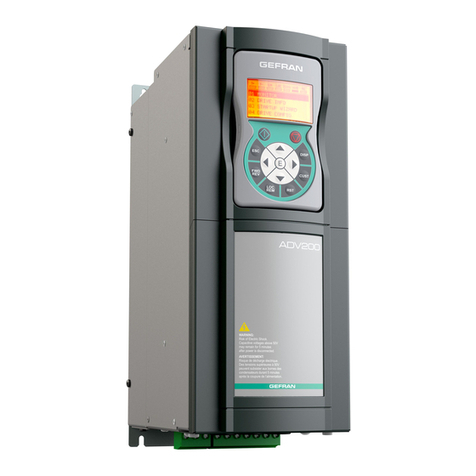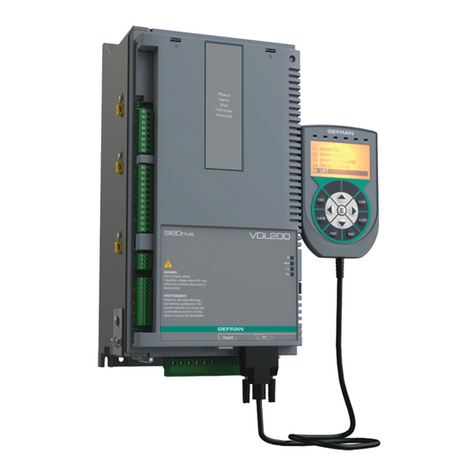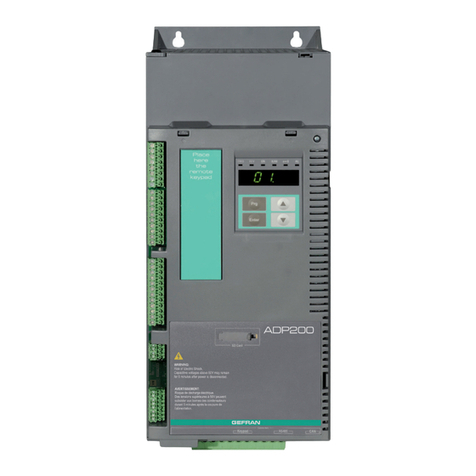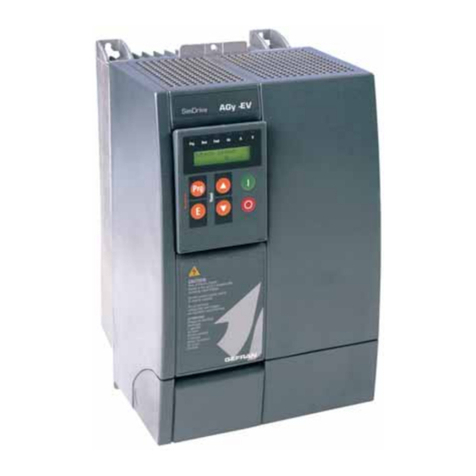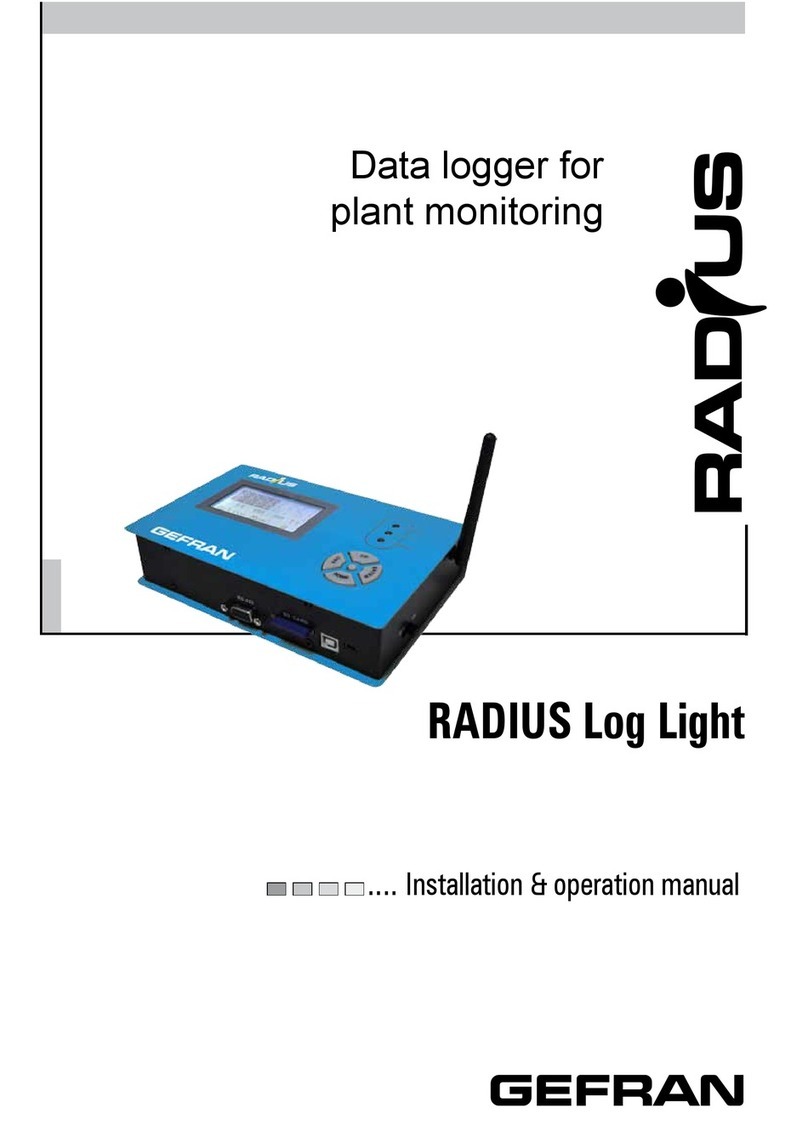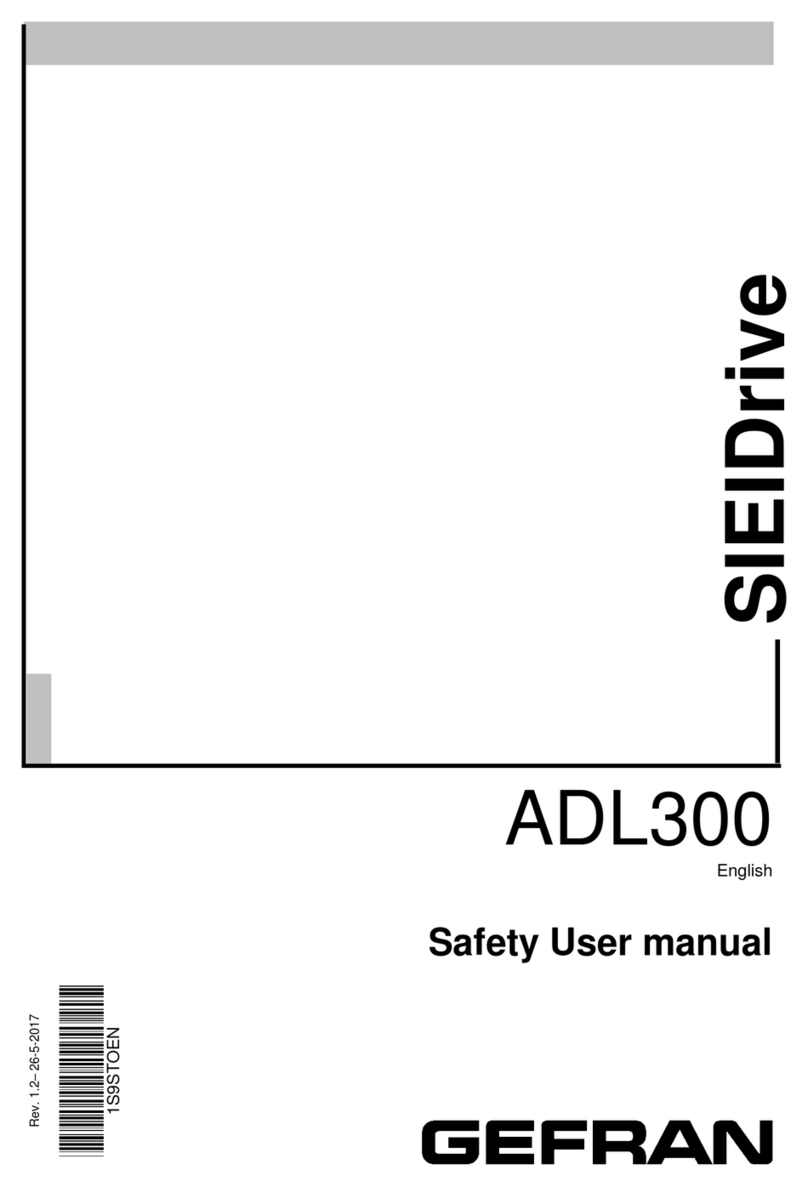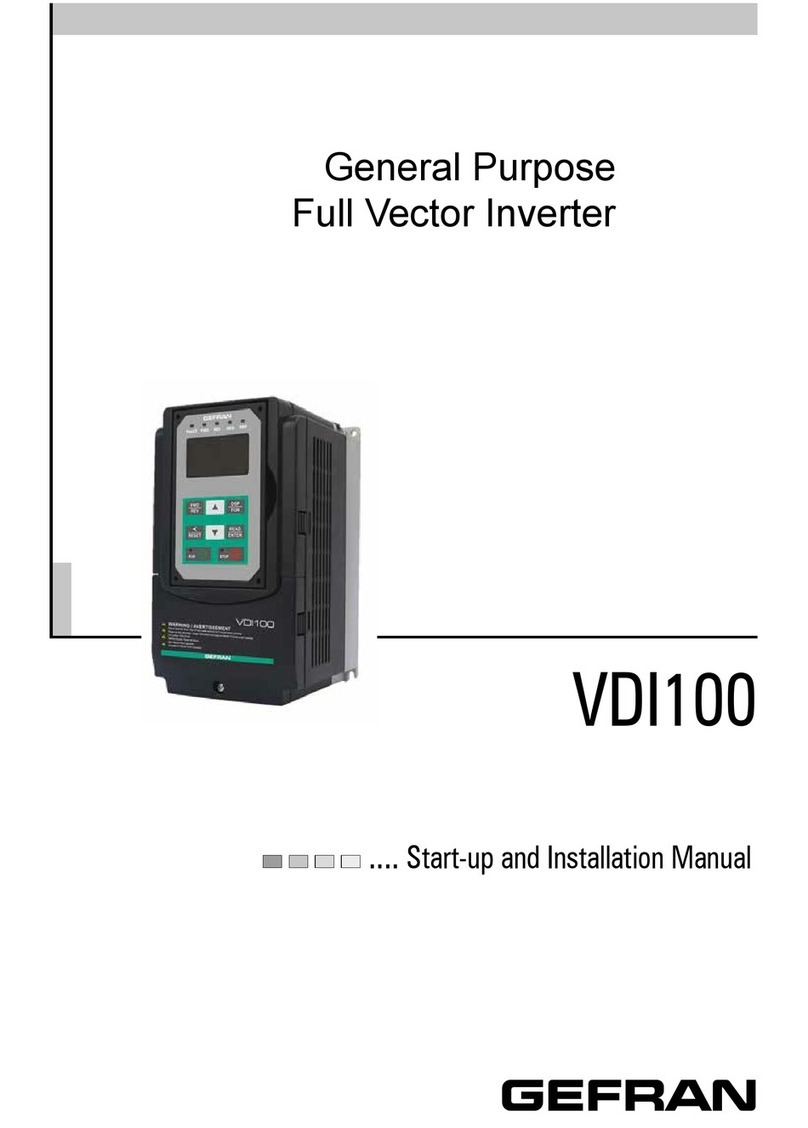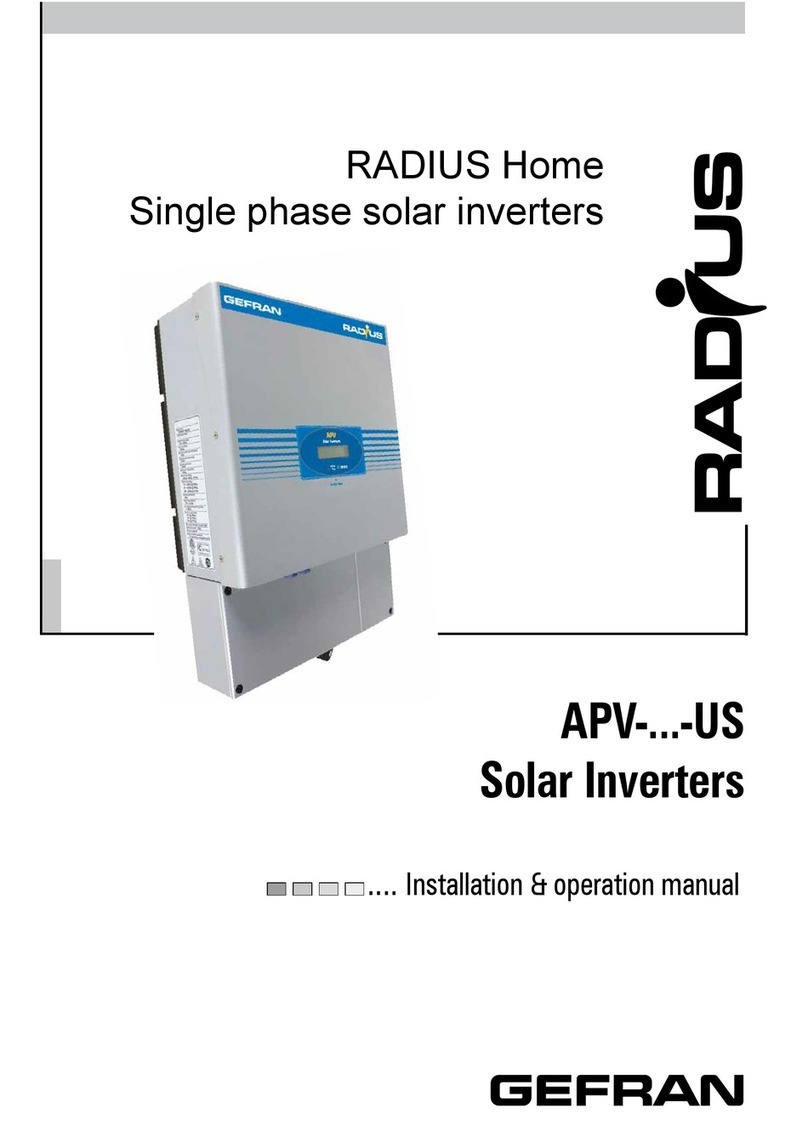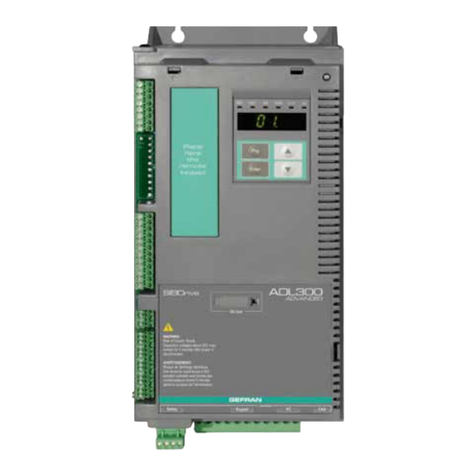
____________________ _
User Guide Electrical Line Shaft for ADV200 Page 3 of 32
TABLE OF CONTENTS
1Introduction............................................................................................................................................... 4
1.1Compatibility Application version / Drive firmware .............................................................................. 4
2General description.................................................................................................................................. 5
2.1Fields of application ............................................................................................................................ 5
3Connection diagrams and system interface.......................................................................................... 6
3.1Control via digital inputs and outputs .................................................................................................. 6
3.2Control via fieldbus interface............................................................................................................... 8
3.3Possible master-slave configurations ............................................................................................... 10
3.3.1Master electrical line shaft from encoder ................................................................................... 10
3.3.2Master electrical line shaft from Fast Link communication interface ......................................... 12
4Commissioning....................................................................................................................................... 14
4.1General information........................................................................................................................... 14
4.2Requirements.................................................................................................................................... 14
4.3Initial operations ................................................................................................................................ 14
4.4Drive parameters managed by the application ................................................................................. 15
55 Control logic and sequences............................................................................................................. 16
5.1Application control modes ................................................................................................................. 16
5.2Jog function ....................................................................................................................................... 16
5.3Zero search ....................................................................................................................................... 16
5.4Positioning......................................................................................................................................... 17
5.4.1Correction of the position of the slave axis in electrical line shaft mode (phase trim)............... 17
5.5Electrical line shaft function............................................................................................................... 18
5.5.1Correction of the electrical line shaft ratio (slip)......................................................................... 18
5.5.2Monitoring of the position of the master with the slave not captured and recovery................... 19
5.6Application block diagram ................................................................................................................. 19
6List of Parameters.................................................................................................................................. 20
6.1SERVO PID menu............................................................................................................................. 20
6.2POSITION menu ............................................................................................................................... 21
6.3LINE SHAFT menu ........................................................................................................................... 23
6.4DIGITAL INPUTS menu .................................................................................................................... 26
6.5DIGITAL OUTPUTS menu ................................................................................................................ 27
6.6HOME REFERENCE menu .............................................................................................................. 28
6.7EXCHANGE menu ............................................................................................................................ 29
6.8ABOUT menu.................................................................................................................................... 29
7Examples................................................................................................................................................. 30
7.1Gear ratio calculation example.......................................................................................................... 30
7.2Startup, tuning and performance check ............................................................................................ 31
